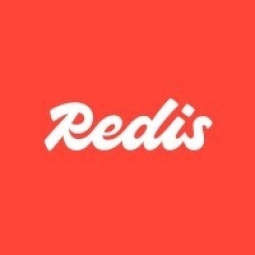技术
- 功能应用 - 企业资源规划系统 (ERP)
- 基础设施即服务 (IaaS) - 虚拟私有云
适用行业
- 水泥
- 建筑与基础设施
适用功能
- 采购
用例
- 施工管理
- 基础设施检查
服务
- 云规划/设计/实施服务
- 系统集成
关于客户
Flowdesk 成立于 2020 年,是一家金融科技 (fintech) 公司,将传统市场的丰富经验与算法交易和加密货币的敏锐知识相结合。 Flowdesk 的全球交易网络将 100 多个集中式和去中心化交易所集成到先进的技术基础设施中,为全球客户群带来尖端的加密服务。这个基于 Redis Cloud 的专有技术平台允许客户进行交易并主动管理自己的流动性,这对于想要保留对其资产的控制权的数字资产发行人来说是一项宝贵的功能。 Flowdesk 的低延迟交易基础设施允许客户执行来自 70 多个代币发行人的交易。这些精通财务的客户依靠 Flowdesk 来提高其代币的市场流动性,同时在安全和透明的环境中保持对资产的控制。
挑战
Flowdesk 是一个面向数字资产发行人的金融技术服务平台,它面临着促进对存储全球金融数据的订单簿进行亚秒级访问的挑战。这需要一个高可用性、低维护的数据库服务,能够与 Google Cloud 生态系统集成、支持 Terraform 并启用 VPC 对等互连。随着 Flowdesk 交易服务的发展,基础设施团队意识到他们需要更强大的数据库和缓存系统来支持实时交易和做市活动。他们寻求一种覆盖全球的基于云的数据库,可以轻松地在多个国际区域之间同步数据。该团队还需要维持严格的区域间数据可用性标准,期望实现 99.999% 的正常运行时间。
解决方案
Flowdesk 在 Google Cloud 上采用了 Redis Enterprise,通过缓存有关订单、价格和市场走势的数据来维护客户交易会话。 Active-Active Redis 用于简化跨地理区域的数据存储和共享。 Flowdesk 将其技术基础设施托管在 Google Cloud 中,Redis Enterprise 是软件环境的关键组件,该软件环境依赖于 Google Kubernetes Engine (GKE)(一种针对容器和容器集群的托管 Kubernetes 服务),并与用于报告和分析的 BigQuery 数据湖结合使用。分析。 Redis Enterprise 可自动扩展以利用 Google Cloud 资源,从而在市场大幅波动期间轻松支持 60,000 IOPS(每秒输入/输出)的使用峰值。随着 Flowdesk 在全球范围内的扩展,Active-Active Redis 简化了存储和共享数据的过程,允许对数据库的多个副本进行读写操作。
运营影响
数量效益

Case Study missing?
Start adding your own!
Register with your work email and create a new case study profile for your business.
相关案例.

Case Study
System 800xA at Indian Cement Plants
Chettinad Cement recognized that further efficiencies could be achieved in its cement manufacturing process. It looked to investing in comprehensive operational and control technologies to manage and derive productivity and energy efficiency gains from the assets on Line 2, their second plant in India.

Case Study
IoT System for Tunnel Construction
The Zenitaka Corporation ('Zenitaka') has two major business areas: its architectural business focuses on structures such as government buildings, office buildings, and commercial facilities, while its civil engineering business is targeted at structures such as tunnels, bridges and dams. Within these areas, there presented two issues that have always persisted in regard to the construction of mountain tunnels. These issues are 'improving safety" and "reducing energy consumption". Mountain tunnels construction requires a massive amount of electricity. This is because there are many kinds of electrical equipment being used day and night, including construction machinery, construction lighting, and ventilating fan. Despite this, the amount of power consumption is generally not tightly managed. In many cases, the exact amount of power consumption is only ascertained when the bill from the power company becomes available. Sometimes, corporations install demand-monitoring equipment to help curb the maximum power demanded. However, even in these cases, the devices only allow the total volume of power consumption to be ascertained, or they may issue warnings to prevent the contracted volume of power from being exceeded. In order to tackle the issue of reducing power consumption, it was first necessary to obtain an accurate breakdown of how much power was being used in each particular area. In other words, we needed to be able to visualize the amount of power being consumed. Safety, was also not being managed very rigorously. Even now, tunnel construction sites often use a 'name label' system for managing entry into the work site. Specifically, red labels with white reverse sides that bear the workers' names on both sides are displayed at the tunnel work site entrance. The workers themselves then flip the name label to the appropriate side when entering or exiting from the work site to indicate whether or not they are working inside the tunnel at any given time. If a worker forgets to flip his or her name label when entering or exiting from the tunnel, management cannot be performed effectively. In order to tackle the challenges mentioned above, Zenitaka decided to build a system that could improve the safety of tunnel construction as well as reduce the amount of power consumed. In other words, this new system would facilitate a clear picture of which workers were working in each location at the mountain tunnel construction site, as well as which processes were being carried out at those respective locations at any given time. The system would maintain the safety of all workers while also carefully controlling the electrical equipment to reduce unnecessary power consumption. Having decided on the concept, our next concern was whether there existed any kind of robust hardware that would not break down at the construction work site, that could move freely in response to changes in the working environment, and that could accurately detect workers and vehicles using radio frequency identification (RFID). Given that this system would involve many components that were new to Zenitaka, we decided to enlist the cooperation of E.I.Sol Co., Ltd. ('E.I.Sol') as our joint development partner, as they had provided us with a highly practical proposal.

Case Study
Splunk Partnership Ties Together Big Data & IoT Services
Splunk was faced with the need to meet emerging customer demands for interfacing IoT projects to its suite of services. The company required an IoT partner that would be able to easily and quickly integrate with its Splunk Enterprise platform, rather than allocating development resources and time to building out an IoT interface and application platform.

Case Study
Bridge monitoring in Hamburg Port
Kattwyk Bridge is used for both rail and road transport, and it has played an important role in the Port of Hamburg since 1973. However, the increasing pressure from traffic requires a monitoring solution. The goal of the project is to assess in real-time the bridge's status and dynamic responses to traffic and lift processes.

Case Study
Bellas Landscaping
Leading landscaping firm serving central Illinois streamlines operations with Samsara’s real-time fleet tracking solution: • 30+ vehicle fleet includes International Terrastar dump trucks and flatbeds, medium- and light-duty pickups from Ford and Chevrolet. Winter fleet includes of snow plows and salters.








